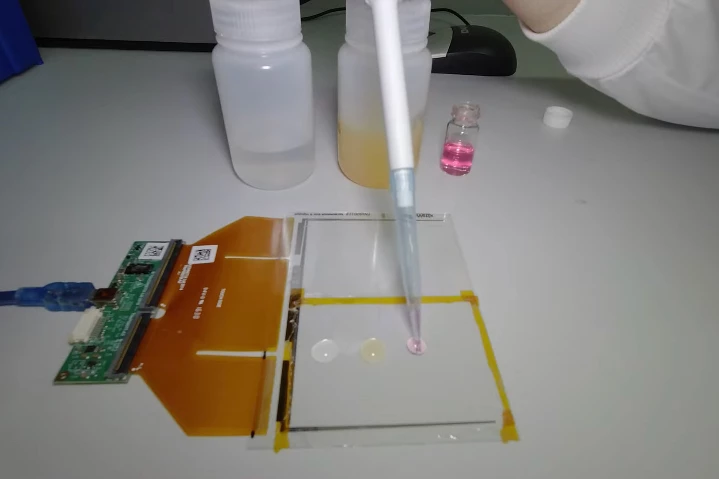When we hear about smartphones being used to perform analytical tasks, there's usually also a device that's connected to the phone. According to a new study, however, a phone's own touchscreen could soon be used to test drinking water and other liquids.
Putting it very simply, capacitive touchscreens detect distortions in the screen's electrostatic field, which are measured as changes in its electrical capacitance. Such distortions occur when an electrical conductor such as a fingertip touches the surface of the screen.
Led by Dr. Ronan Daly and Prof. Lisa Hall, scientists at the University of Cambridge recently set out to determine if ions in liquids could likewise be detected and measured. In order to do so, they applied drops of different liquids onto a standalone capacitive touchscreen, which was similar to those used in smartphones and tablets.
It was found that the liquids did indeed produce a measurable change in capacitance. What's more, each liquid had its own telltale signature, based on the concentration and charge of its ions.
The researchers now hope that people could one day use their smartphone screens for tasks such as checking drinking water for contaminants like arsenic. For the best results, one part of the touchscreen ought to be designed for the task, as the screens are currently optimized for the detection of users' fingertips.
"This is a starting point for broader exploration of the use of touchscreen sensing in mobile technologies and the creation of tools that are accessible to everyone, allowing rapid measurements and communication of data," says Hall.
A paper on the research was recently published in the journal Sensors and Actuators B. There's more information in the following video.
Source: University of Cambridge




